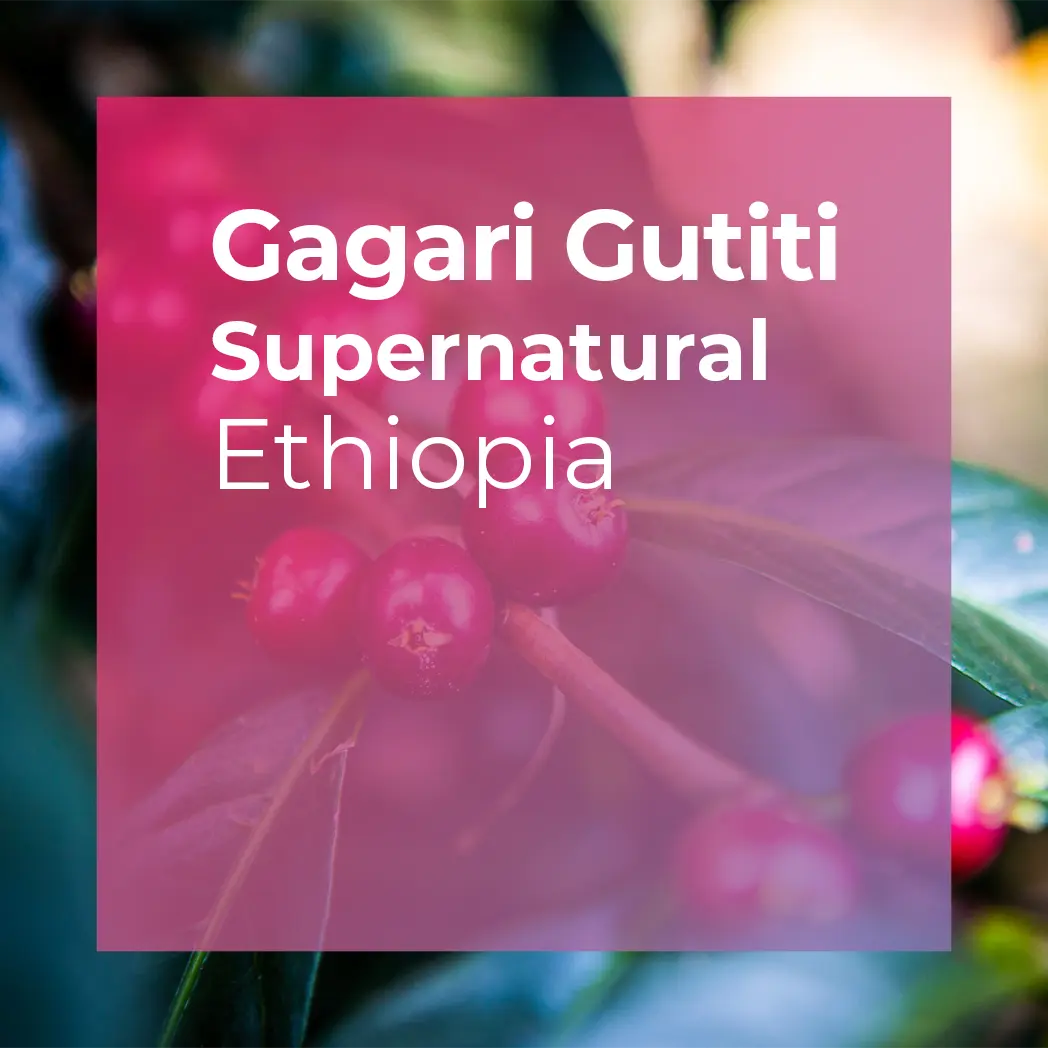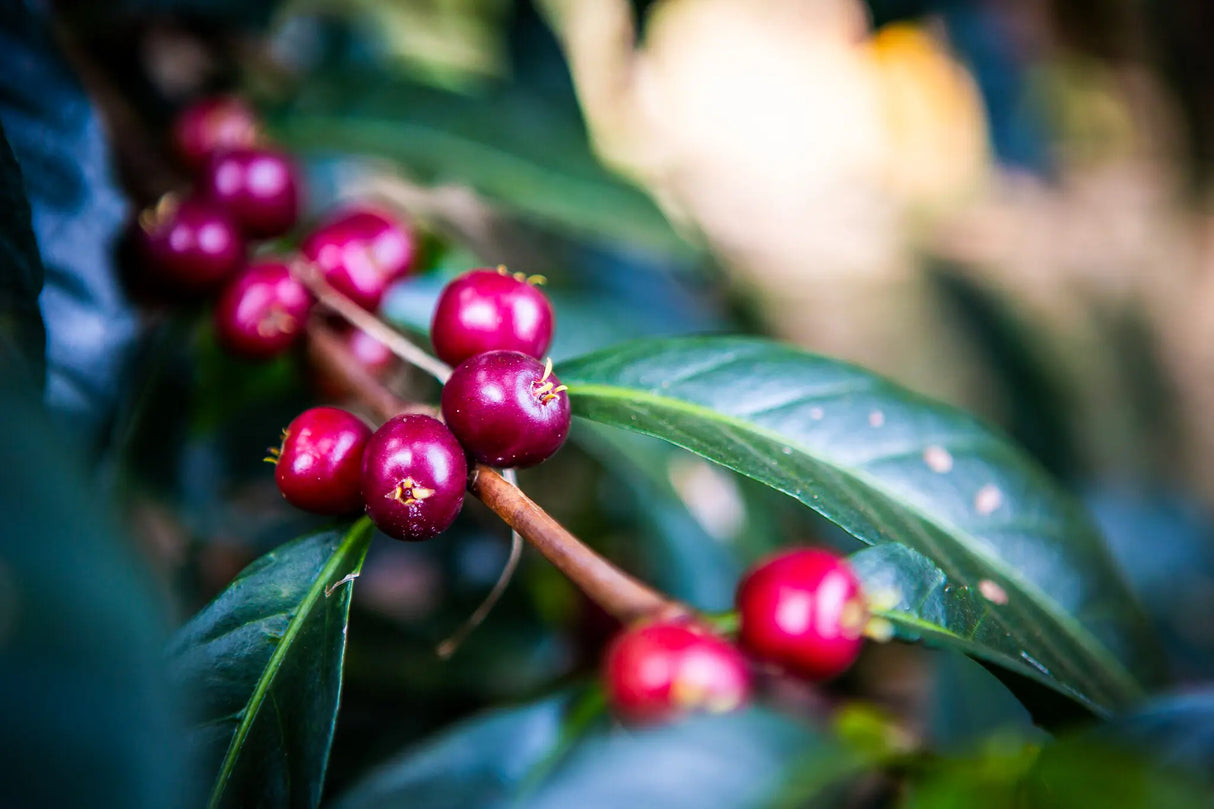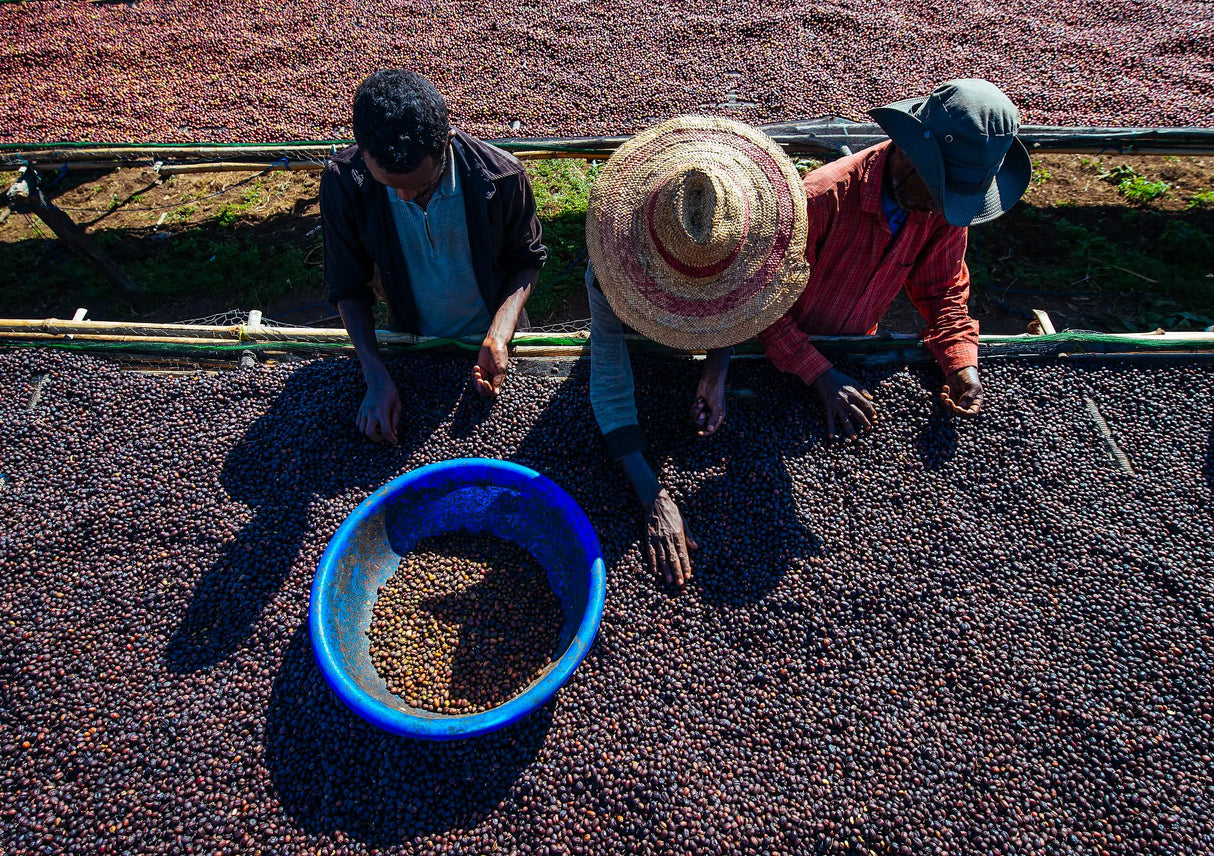GAGARI GUTITI, Supernatural
£16.00
Unit price
/
Unavailable
GAGARI GUTITI, Supernatural - 200g is backordered and will ship as soon as it is back in stock.
Lot Info
Lot Info
Producer
Producer
Cultivar
Cultivar
Process
Process
Traceability
Traceability
| Producer | Gagari Gutiti Washing Station |
| Location | Banko, Gedeb, Ethiopia |
| Elevation | 1,983 masl |
| Cultivar | JARC Varieties |
| Preparation | Natural, Extended Fermentation |
| Harvest | January - February 2025 |
| Arrival | July 2025 |
| Importing Partner | Covoya / Primrose |












